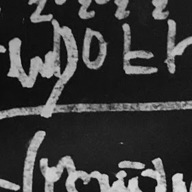Review
Contents
Review#
Find the derivative of the following functions.
\(f(x) = 3x^3 - \frac{4}{x^2}\)
\(f(x) = (4 - x^2) ^3\)
\(f(x) = e^{\sin x}\)
\(f(x) = \ln(x + 2)\)
\(f(x) = x^2 \cos x + x \tan x\)
Find the given derivatives.
First derivative of \(y = x \ln(x) \cos(x)\)
Third derivative of \(y = (3x + 2) ^2\)
Second derivative of \(y = 4^x + x^2 \sin(x)\)
Find the equation of the line at the given point.
\(y = x + e^x - \frac{1}{x}\) at \(x = 0\)
The water level in Ocean City, New Jersey, in January, which can be approximated by \(w(t) = 1.9 + 2.9 \cos(\frac{\pi}{6}t)\), where t is measured in hours after midnight, and the height is measured in feet.
Find and graph the derivative. What is the physical meaning?
Find \(w'(3)\). What is the physical meaning of this value?
Behavior of \(f\) through \(f'\)#
Below, plot the given function and compute its derivative. Use the graph of \(f'\) to estimate where \(f\) is increasing or decreasing, any extreme values, and where concave up and concanve down.
\(f(x) = 4x^4 - 32x^3 + 89x^2 - 95x + 29\)
\(f(x) = x^2 - 4x + 7\cos{x}\) on the interval \(-4 \leq x \leq 4\)


